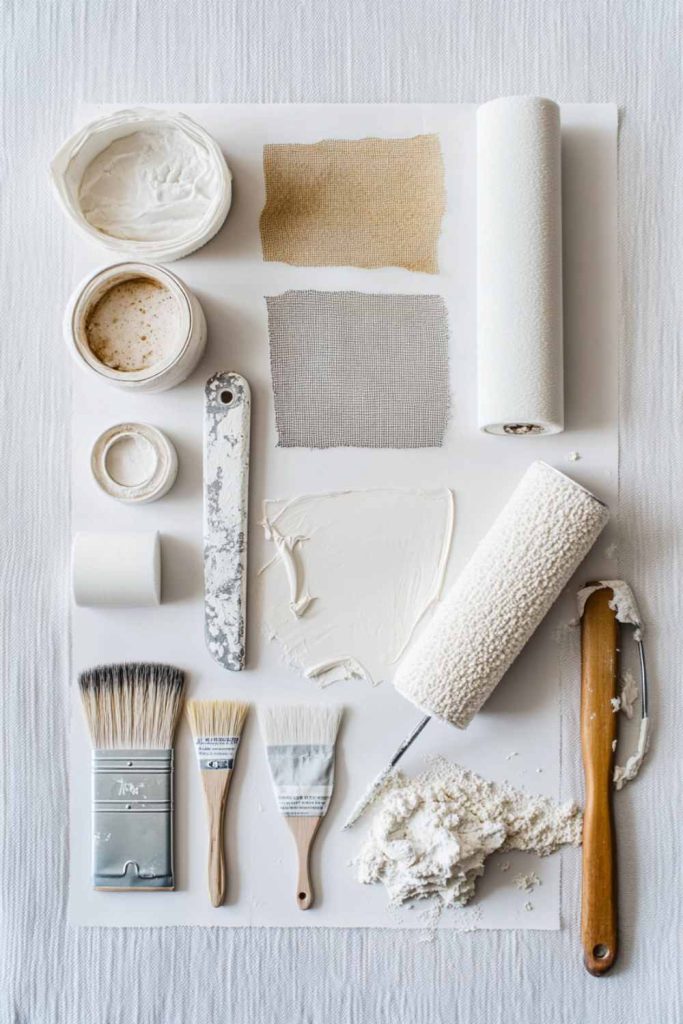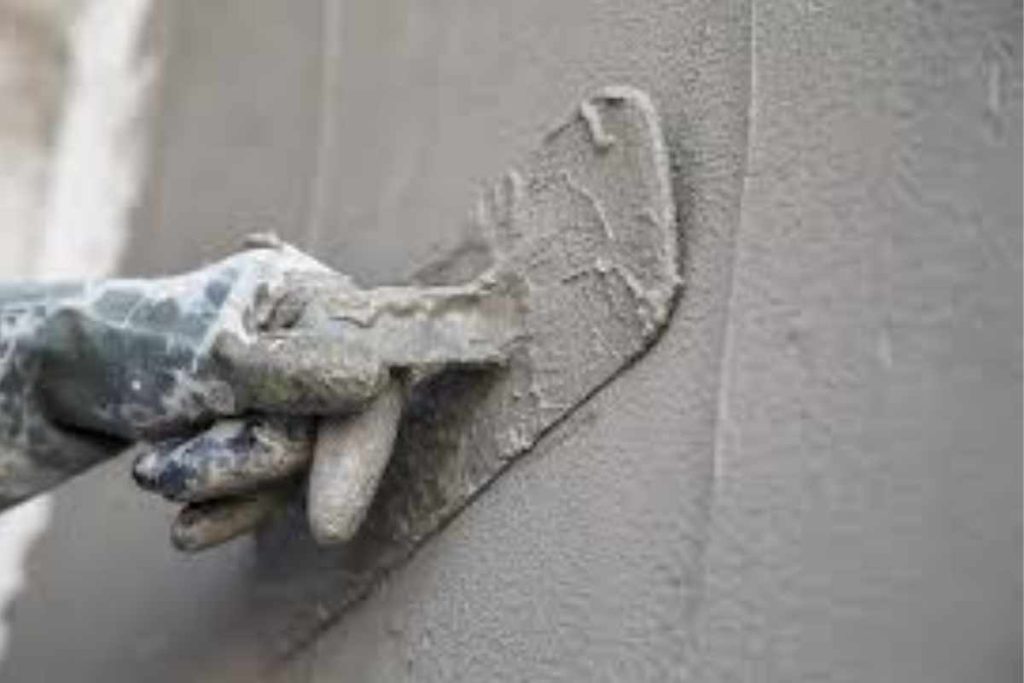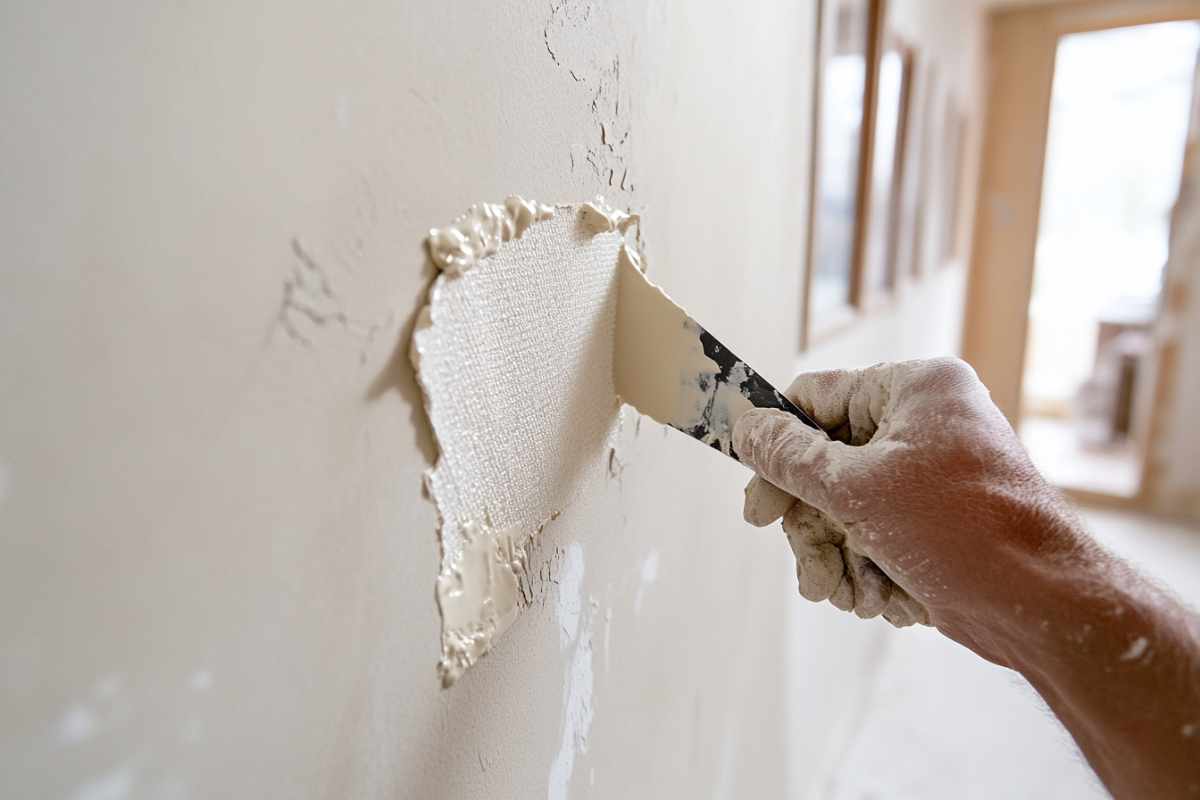A solid patch should be invisible, durable, and moisture‑tight. Below is an expanded, straightforward guide that covers every hole, from pinprick to fist‑sized, plus the finishing details that make repairs disappear.
Tools & Materials You’ll Need
| Category | Items | Why They Matter |
|---|---|---|
| Cutting & Prep | Utility knife, drywall jab saw, stud finder, dust brush | Clean edges = smoother patch; stud finder prevents hitting wiring/pipes |
| Fastening | 1‑1 ¼ in. drywall screws, scrap 1×2 furring strip (for backing) | Anchors large patches; screws must not break paper surface |
| Filling | • Lightweight spackle (≤ 5 cm holes) • All‑purpose joint compound (layer build‑up) • Setting‑type compound (hot mud) for same‑day finish | Hot mud (20‑ or 45‑minute) lets you sand and paint the same afternoon |
| Reinforcement | Adhesive mesh tape (50 mm), aluminum‑faced repair patch, paper tape for flat seams | Mesh resists cracking; aluminum patch bridges mid‑size holes |
| Finishing | 120‑ & 220‑grit sanding block, primer‑sealer, touch‑up paint (match sheen), 4‑ and 6‑in. knives | Block keeps edges flat; primer prevents flashing |
| Safety | N95 mask, safety glasses, drop cloth, shop‑vac with HEPA filter | Drywall dust = silica + talc—capture at source |

Classifying Hole Sizes & Methods
| Hole Size | Typical Cause | Best Repair Strategy | Drying/Work Time |
|---|---|---|---|
| Pinholes (< 5 mm) | Picture nails, push‑pins | Knife‑load spackle → scrape flush → 220‑grit sand → spot‑prime | 30 min |
| Small (5 mm–5 cm) | Door‑handle dings | Fiberglass mesh patch → 2 thin layers joint compound → sand/prime | 1–2 hr |
| Medium (5–15 cm) | Doorknob, furniture hit | Aluminum patch OR self‑stick mesh + compound build‑up | 2–4 hr |
| Large (> 15 cm) | Accidental impact, plumbing fix | Cut to rectangle, insert wood cleat + new drywall piece; tape, mud, feather 8–10 cm past seam | 4–24 hr depending on compound |
Step‑by‑Step DIY Tutorials
- Prepare the opening
- Bevel edge 45° with utility knife; removes loose gypsum for better bond.
- Vacuum dust; wipe with damp rag (compound adheres to clean paper).
- Backer install (holes > 10 cm)
- Cut 1×2 strip 5 cm longer than opening.
- Slip inside wall, hold with one hand, drive two screws through drywall into each end.
- Insert patch
- Cut drywall piece same thickness (½ in./12.5 mm common).
- Screw to backer flush with surface—no proud edges.
- Tape
- Center self‑adhesive mesh over seam OR embed paper tape in a 1 mm skim of compound.
- Apply compound
- First coat: 4‑in. knife, cover tape only. Let set.
- Second coat: 6‑in. knife, feather 5‑7 cm past edge.
- Third coat (as needed): Taper another 5 cm; aim for < 1 mm thickness at feather edge.
- Sand & inspect
- Cross‑light with a flashlight parallel to wall; highlight ridges.
- Sand 120‑grit for shape, finish 220‑grit for paint‑ready surface. Vacuum dust.
- Prime & paint
- Use stain‑blocking primer‑sealer across patch and 5 cm beyond.
- Roll matching paint sheen; “box” paint if blending old and new cans. Feather edges with a dry roller to avoid lap lines.

Pro‑Level Tips
| Task | Tip | Benefit |
|---|---|---|
| Mixing mud | Add compound to water (not water to compound) | Fewer lumps, creamier spread |
| Fast drying | Set a box fan + space heater to keep room ~24 °C, < 50 % RH | Cuts cure time by 30 % |
| Matching texture | For orange‑peel, thin joint compound to pancake‑batter, mist on with cheap $15 hopper gun or texture‑in‑a‑can | Seamless blend |
Prevent Future Damage
- Door stoppers: pneumatic or spring style behind every swing door.
- Furniture sliders: keep chair backs from ramming sheetrock.
- Stud hangers: drive heavy décor fasteners into studs, not bare drywall.
Maintenance Schedule
| Frequency | Checkpoints |
|---|---|
| Quarterly | Scan high‑traffic walls for scuffs or hairline cracks; touch‑up before moisture intrudes. |
| Annually | Re‑caulk baseboard and crown gaps; re‑prime areas prone to kids’ rough play. |
FAQs
- Can I skip mesh tape on medium holes?
No—unreinforced mud shrinks and cracks within months. - Hot mud vs. premixed bucket?
Hot mud sets via chemical reaction—great for speed; premixed dries by evaporation—better open time for beginners. - How do I match paint when I don’t know the color?
Cut a coin‑size chip from an inconspicuous spot, take to paint store’s spectro‑scanner; they’ll mix a near‑perfect match. - What if my wall is plaster, not drywall?
Use setting‑type compound plus two layers of 2 in. plaster washers around the hole to anchor loose keys before filling.
With these detailed steps and pro tips, your repair will blend seamlessly, resist cracking, and stand up to everyday bumps—saving you the cost of a call‑out and keeping your walls showroom smooth.


